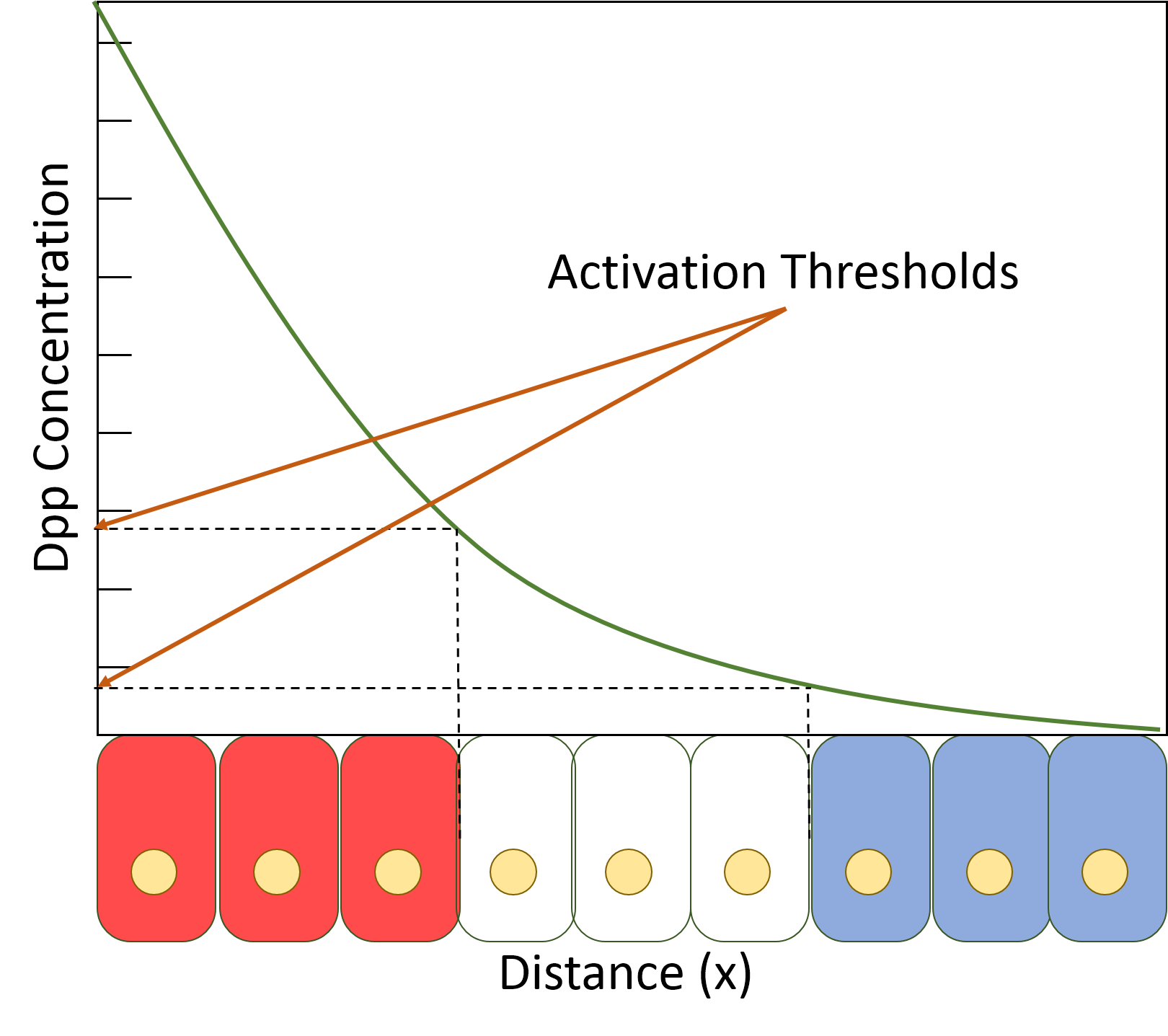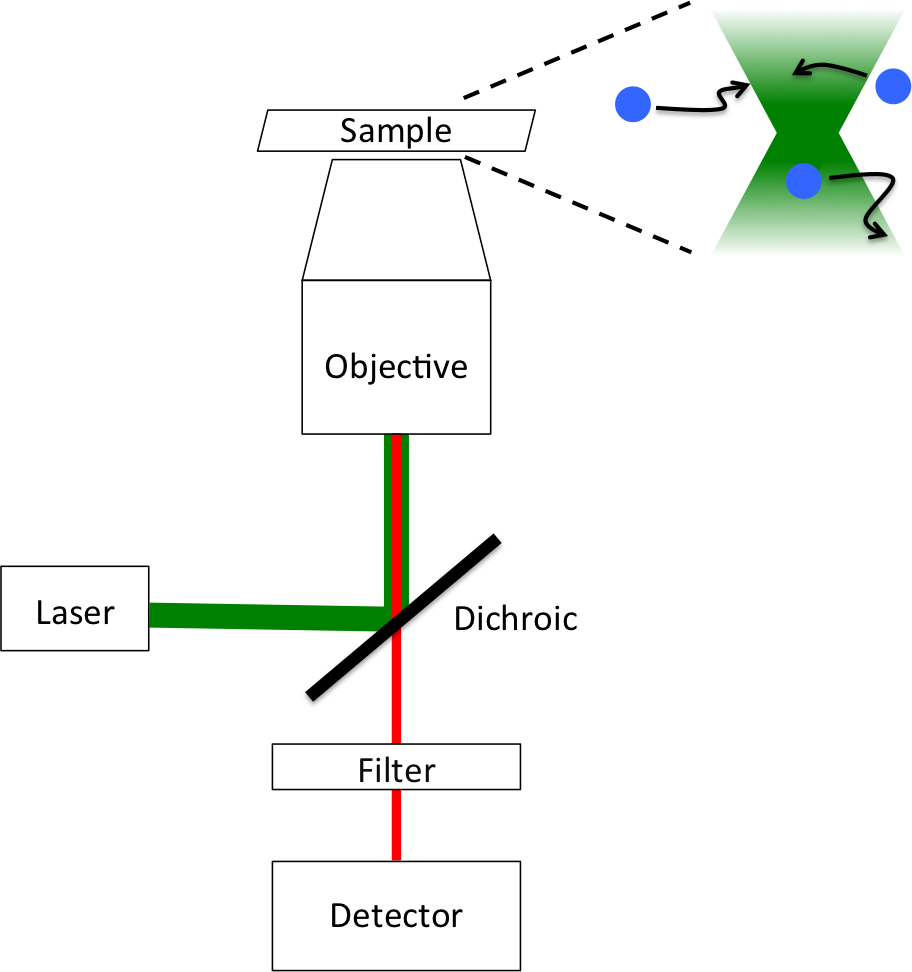|
Decapentaplegic
Decapentaplegic (Dpp) is a key morphogen involved in the development of the fruit fly ''Drosophila melanogaster'' and is the first validated secreted morphogen. It is known to be necessary for the correct patterning and development of the early ''Drosophila'' embryo and the fifteen imaginal discs, which are tissues that will become limbs and other organs and structures in the adult fly. It has also been suggested that Dpp plays a role in regulating the growth and size of tissues. Flies with mutations in decapentaplegic fail to form these structures correctly, hence the name (''decapenta''-, fifteen, -''plegic'', paralysis). Dpp is the Drosophila homolog of the vertebrate bone morphogenetic proteins (BMPs), which are members of the TGF-β superfamily, a class of proteins that are often associated with their own specific signaling pathway. Studies of Dpp in Drosophila have led to greater understanding of the function and importance of their homologs in vertebrates like humans. Func ... [...More Info...] [...Related Items...] OR: [Wikipedia] [Google] [Baidu] |
Mothers Against Dpp
Mothers against decapentaplegic is a protein from the SMAD family that was discovered in '' Drosophila''. During ''Drosophila'' research, it was found that a mutation in the gene in the mother repressed the gene decapentaplegic in the embryo. The phrase "Mothers against" was added as a humorous take-off on organizations opposing various issues e.g. Mothers Against Drunk Driving (MADD); and based on a tradition of such unusual naming within the gene research community. Several human homologues are known: * Mothers against decapentaplegic homolog 1 * Mothers against decapentaplegic homolog 2 * Mothers against decapentaplegic homolog 3 * Mothers against decapentaplegic homolog 4 * Mothers against decapentaplegic homolog 5 * Mothers against decapentaplegic homolog 6 * Mothers against decapentaplegic homolog 7 * Mothers against decapentaplegic homolog 9 Mothers against decapentaplegic homolog 9 also known as SMAD9, SMAD8, and MADH6 is a protein that in humans is encoded by ... [...More Info...] [...Related Items...] OR: [Wikipedia] [Google] [Baidu] |
SMAD (protein)
Smads (or SMADs) comprise a family of structurally similar proteins that are the main signal transducers for receptors of the transforming growth factor beta (TGF-B) superfamily, which are critically important for regulating cell development and growth. The abbreviation refers to the homologies to the ''Caenorhabditis elegans'' SMA ("small" worm phenotype) and MAD family ("Mothers Against Decapentaplegic") of genes in Drosophila. There are three distinct sub-types of Smads: receptor-regulated Smads ( R-Smads), common partner Smads (Co-Smads), and inhibitory Smads ( I-Smads). The eight members of the Smad family are divided among these three groups. Trimers of two receptor-regulated SMADs and one co-SMAD act as transcription factors that regulate the expression of certain genes. Sub-types The R-Smads consist of Smad1, Smad2, Smad3, Smad5 and Smad8/9, and are involved in direct signaling from the TGF-B receptor. Smad4 is the only known human Co-Smad, and has the role of partneri ... [...More Info...] [...Related Items...] OR: [Wikipedia] [Google] [Baidu] |
Morphogen
A morphogen is a substance whose non-uniform distribution governs the pattern of tissue development in the process of morphogenesis or pattern formation, one of the core processes of developmental biology, establishing positions of the various specialized cell types within a tissue. More specifically, a morphogen is a signaling molecule that acts directly on cells to produce specific cellular responses depending on its local concentration. Typically, morphogens are produced by source cells and diffuse through surrounding tissues in an embryo during early development, such that concentration gradients are set up. These gradients drive the process of differentiation of unspecialised stem cells into different cell types, ultimately forming all the tissues and organs of the body. The control of morphogenesis is a central element in evolutionary developmental biology (evo-devo). History The term was coined by Alan Turing in the paper "The Chemical Basis of Morphogenesis", where he ... [...More Info...] [...Related Items...] OR: [Wikipedia] [Google] [Baidu] |
Gastrulation
Gastrulation is the stage in the early embryonic development of most animals, during which the blastula (a single-layered hollow sphere of cells), or in mammals the blastocyst is reorganized into a multilayered structure known as the gastrula. Before gastrulation, the embryo is a continuous epithelial sheet of cells; by the end of gastrulation, the embryo has begun differentiation to establish distinct cell lineages, set up the basic axes of the body (e.g. dorsal-ventral, anterior-posterior), and internalized one or more cell types including the prospective gut. In triploblastic organisms, the gastrula is trilaminar (three-layered). These three germ layers are the ectoderm (outer layer), mesoderm (middle layer), and endoderm (inner layer).Mundlos 2009p. 422/ref>McGeady, 2004: p. 34 In diploblastic organisms, such as Cnidaria and Ctenophora, the gastrula has only ectoderm and endoderm. The two layers are also sometimes referred to as the ''hypoblast'' and ''epiblast''. Sponges ... [...More Info...] [...Related Items...] OR: [Wikipedia] [Google] [Baidu] |
Cytoneme
Cytonemes are thin, cellular projections that are specialized for exchange of signaling proteins between cells. Cytonemes emanate from cells that make signaling proteins, extending directly to cells that receive signaling proteins. Cytonemes also extend directly from cells that receive signaling proteins to cells that make them. A cytoneme is a type of filopodium - a thin, tubular extension of a cell’s plasma membrane that has a core composed of tightly bundled, parallel actin filaments. Filopodia can extend more than 100 μm and have been measured as thin as 0.1 μm and as thick as 0.5 μm. Cytonemes with a diameter of approximately 0.2 μm and as long as 80 μm have been observed in the Drosophila wing imaginal disc. Many cell types have filopodia. The functions of filopodia have been attributed to pathfinding of neurons, early stages of synapse formation, antigen presentation by dendritic cells of the immune system, force generation by macrophages and virus transmission. The ... [...More Info...] [...Related Items...] OR: [Wikipedia] [Google] [Baidu] |
Dally (gene)
Dally (division abnormally delayed) is the name of a gene that encodes a HS-modified-protein found in the fruit fly ('' Drosophila melanogaster''). The protein has to be processed after being codified, and in its mature form it is composed by 626 amino acids,Uniprot KB forming a proteoglycan rich in heparin sulfate which is anchored to the cell surface via covalent linkage to glycophosphatidylinositol (GPI), so we can define it as a glypican. For its normal biosynthesis it requires sugarless (''sgl''), a gene that encodes an enzyme which plays a critical role in the process of modification of dally. Dally’s function [...More Info...] [...Related Items...] OR: [Wikipedia] [Google] [Baidu] |
Hedgehog (cell Signaling)
The Hedgehog signaling pathway is a signaling pathway that transmits information to embryonic cells required for proper cell differentiation. Different parts of the embryo have different concentrations of hedgehog signaling proteins. The pathway also has roles in the adult. Diseases associated with the malfunction of this pathway include cancer. The Hedgehog signaling pathway is one of the key regulators of animal development and is present in all bilaterians. The pathway takes its name from its polypeptide ligand (biochemistry), ligand, an intracellular signaling molecule called Hedgehog (''Hh'') found in fruit flies of the genus ''Drosophila''; fruit fly larva lacking the ''Hh'' gene are said to resemble hedgehogs. ''Hh'' is one of Drosophila's segment polarity gene products, involved in establishing the basis of the fly body plan. Larvae without ''Hh'' are short and spiny, resembling the hedgehog animal. The molecule remains important during later stages of embryogenesis and M ... [...More Info...] [...Related Items...] OR: [Wikipedia] [Google] [Baidu] |
Fluorescence Recovery After Photobleaching
Fluorescence recovery after photobleaching (FRAP) is a method for determining the kinetics of diffusion through tissue or cells. It is capable of quantifying the two dimensional lateral diffusion of a molecularly thin film containing fluorescently labeled probes, or to examine single cells. This technique is very useful in biological studies of cell membrane diffusion and protein binding. In addition, surface deposition of a fluorescing phospholipid bilayer (or monolayer) allows the characterization of hydrophilic (or hydrophobic) surfaces in terms of surface structure and free energy. Similar, though less well known, techniques have been developed to investigate the 3-dimensional diffusion and binding of molecules inside the cell; they are also referred to as FRAP. Experimental setup The basic apparatus comprises an optical microscope, a light source and some fluorescent probe. Fluorescent emission is contingent upon absorption of a specific optical wavelength or color which re ... [...More Info...] [...Related Items...] OR: [Wikipedia] [Google] [Baidu] |
Transcytosis
Transcytosis (also known as cytopempsis) is a type of transcellular transport in which various macromolecules are transported across the interior of a cell. Macromolecules are captured in vesicles on one side of the cell, drawn across the cell, and ejected on the other side. Examples of macromolecules transported include IgA, transferrin, and insulin. While transcytosis is most commonly observed in epithelial cells, the process is also present elsewhere. Blood capillaries are a well-known site for transcytosis, though it occurs in other cells, including neurons, osteoclasts and M cells of the intestine. Regulation The regulation of transcytosis varies greatly due to the many different tissues in which this process is observed. Various tissue-specific mechanisms of transcytosis have been identified. Brefeldin A, a commonly used inhibitor of ER-to-Golgi apparatus transport, has been shown to inhibit transcytosis in dog kidney cells, which provided the first clues as to the nature ... [...More Info...] [...Related Items...] OR: [Wikipedia] [Google] [Baidu] |
Fluorescence Correlation Spectroscopy
Fluorescence correlation spectroscopy (FCS) is a statistical analysis, via time correlation, of stationary fluctuations of the fluorescence intensity. Its theoretical underpinning originated from L. Onsager's regression hypothesis. The analysis provides kinetic parameters of the physical processes underlying the fluctuations. One of the interesting applications of this is an analysis of the concentration fluctuations of fluorescent particles (molecules) in solution. In this application, the fluorescence emitted from a very tiny space in solution containing a small number of fluorescent particles (molecules) is observed. The fluorescence intensity is fluctuating due to Brownian motion of the particles. In other words, the number of the particles in the sub-space defined by the optical system is randomly changing around the average number. The analysis gives the average number of fluorescent particles and average diffusion time, when the particle is passing through the space. Eventua ... [...More Info...] [...Related Items...] OR: [Wikipedia] [Google] [Baidu] |
Glypican
Glypicans constitute one of the two major families of heparan sulfate proteoglycans, with the other major family being syndecans. Six glypicans have been identified in mammals, and are referred to as GPC1 through GPC6. In ''Drosophila'' two glypicans have been identified, and these are referred to as dally (division abnormally delayed) and dally-like. One glypican has been identified in ''C. elegans''. Glypicans seem to play a vital role in developmental morphogenesis, and have been suggested as regulators for the Wnt and Hedgehog cell signaling pathways. They have additionally been suggested as regulators for fibroblast growth factor and bone morphogenic protein signaling. Structure While six glypicans have been identified in mammals, several characteristics remain consistent between these different proteins. First, the core protein of all glypicans is similar in size, approximately ranging between 60 and 70 kDa. Additionally, in terms of amino acid sequence, the location of fo ... [...More Info...] [...Related Items...] OR: [Wikipedia] [Google] [Baidu] |





